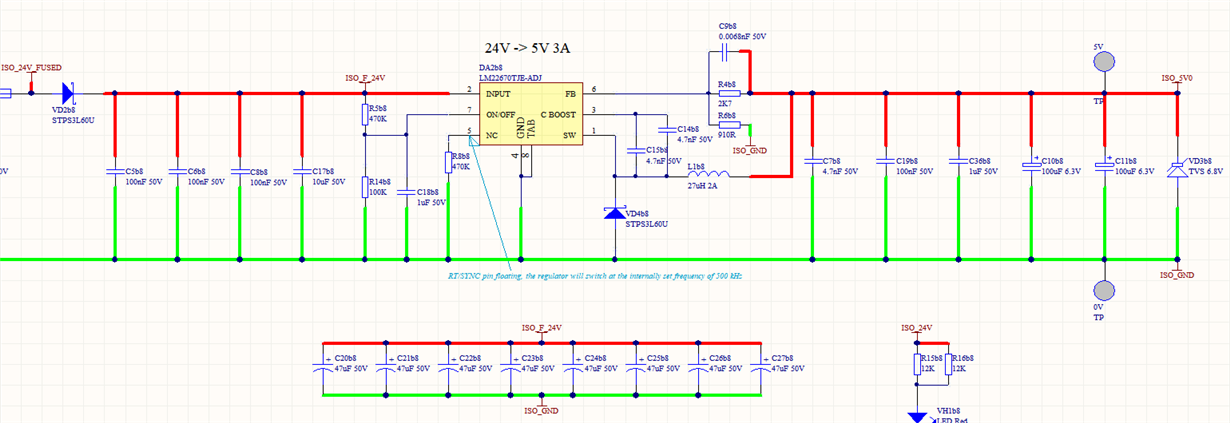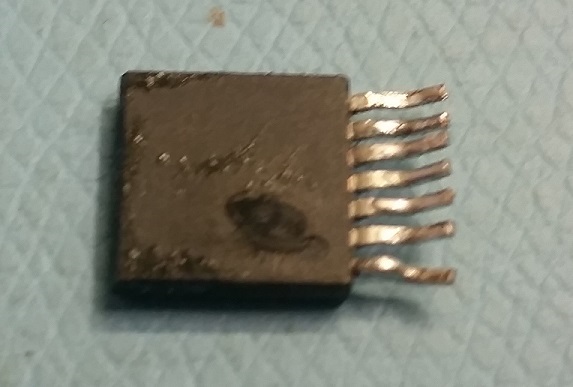Hello,
We have had some issues with a LM22670 DC/DC design (especially with specific DATECODES) we can't fully explain.
The schematics are the followings :

The input voltage is comprised between 18V and 25,5V, and the output voltage is 3.3V (1.5A)
Our design is stable when simulated with WEBENCH but we saw on our board it is clearly not stable by measuring the current into the output self inductance :

On most of our boards (98%), we do not have any problem, but on several boards, especially with a specific DATCODE (14AB), the LM22670 is damaged (the package burns, pin 7 and 8 are in short circuit...). Can the instability we have found explain this ? There should be overcurrent protection under the conditions described in the datasheet (equation), and our design seems to meet all these conditions.
An other question : is the LM22670 supposed to be stable with only a few milliamps of output load ? There is no mention of minimum output load in the datasheet.
We couldn't find it in the datasheet the MAX value specified for the TBLK parameter.
We decreased the frequency to 500 kHz, the design is more stable but the component continues to be damaged...
Any idea of what could be the problem ?
Thank you in advance !



